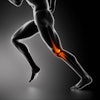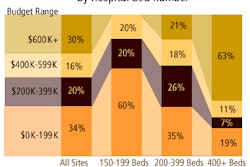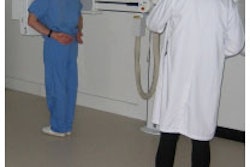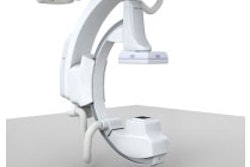Diet and food choices are known to have a positive or negative effect on heart health as well as the aging process. For instance, good cholesterol is lauded as a cardioprotective agent, while antioxidants are hailed as a way to maintain youth.
In terms of maintaining strong bones, calcium and certain vitamins are considered the golden tickets. Two recent studies looked at whether cholesterol and antioxidant supplements have a meaningful impact on bone health.
Serum-supportive BMD
The connection between cardiovascular disease and osteoporosis is still a mystery, but potential linking factors include estrogen, bone-associated proteins, and cholesterol biosynthetic pathways, according to nutritionists.
"Atherosclerotic plaques and bone tissue both contain hydroxyapatite ... as well as several bone matrix proteins, including osteopontin," explained Jasminka Ilich, Ph.D., and Rhonda Brownbill, Ph.D. "Aortic valve calcification was shown to be similar to the bone mineralization processes and seems to be mediated by an osteoblast-like phenotype in human aortic values" (Journal of Women's Health, April 2006, Vol. 15:3, pp. 261-270).
Ilich is from the department of nutrition, food, and exercise sciences at Florida State University in Tallahassee. Brownbill is from the School of Allied Health at the University of Connecticut in Storrs.
Previous research has shown a varied relationship between lipid profiles and bone mineral density (BMD). Ilich and Brownbill investigated the association between serum lipids and dietary saturated fat with BMD, as well as markers of bone turnover.
Their study population consisted of 126 healthy, nonsmoking, Caucasian, postmenopausal women who were enrolled in a three-year longitudinal study on sodium and bone health. The enrollees kept a three-day diary of dietary intake and average alcohol intake.
BMD was measured by DEXA (DPX-MD, GE Healthcare/Lunar, Chalfont St. Giles, U.K.) of the forearm, lumbar spine, femoral neck, Ward's triangle, femoral shaft, trochanter, and total hip. Based on daily quality assurance and weekly long-term stability tests on an aluminum spinal phantom, the coefficient of variation (CV%) was 0.49%.
According to the results, the study group's total fat (31%) and saturated fat (10.6%) intakes were almost at the recommended levels. Based on serum and urinary analysis, total cholesterol and triglycerides were just slightly above normal levels.
The authors found a significantly positive relationship between serum triglycerides and femoral shaft BMD (p = 0.039) accounting for a 4.4% variance. High levels of serum triglycerides were also positively associated with neck BMD, Ward's triangle BMD, and total hip BMD.
Serum cholesterol was also positively associated with total body BMD (p = 0.039). Subjects were divided into below and above 240 mg/dL for serum cholesterol (clinically significantly value); those who were above the median had higher BMD for all sites except the hip.
Finally, the group found no relationship between dietary fats and bone sites, or among serum cholesterol, triglycerides, and markers of bone turnover.
"Our main findings are surprising in that serum triglycerides and total cholesterol were both positively related to either hip or total body BMD, indicating that the higher the serum lipids, the higher the BMD," the authors wrote.
They suggested that there might be some common mechanism that underlies lipid and bone metabolism, although additional studies would be necessary to substantiate that theory. Future research would also have to differentiate between low-density lipids (LDL) and high-density lipids (HDL) and their effect on BMD.
"It is also possible that subjects with higher levels of HDL, which is cardioprotective, may demonstrate high levels of BMD," the authors stated.
Suppressing bone resorption
Oxidative stress, a condition that is caused by exposure to oxidants that can disrupt cell status, plays an influential role in aging and degenerative disease such as atherosclerosis and rheumatoid arthritis. Of course, osteoporosis is another common degenerative disease, but does oxidative stress contribute to bone loss?
"Antioxidants attenuate the cytotoxic effects of oxidative stress.... Vitamins C and E function as antioxidant(s) ... (and there is) a positive association between dietary vitamin C intake and bone mineral density (BMD) in postmenopausal women," wrote Julie Pasco, Ph.D., and colleagues from the University of Melbourne-Geelong Hospital in Geelong, Australia, and Monash University-Alfred Hospital in Melbourne (Journal of Women's Health, April 2006, Vol. 15:3, pp. 295-300).
For this analysis, the authors included 533 women from the Geelong Osteoporosis Study, which looked at the prevalence of the disease in Australian women (Journal of Clinical Densitometry, Fall 2000, Vol. 3:3, pp. 261-268).
In addition to self-reported supplement use, the authors gathered information on serum bone resorption (serum bone or CTx marker), bone formation (serum bone-specific alkaline phosphatase or BSAP marker), and whole-body BMD (DPX-L, GE Healthcare/Lunar).
According to the results, 44 subjects took vitamin C and/or E supplements, and tended to have a lower body mass index than the nonusers. Also, serum CTx values tended to be lower in this group, although the difference was not statistically significant.
No differences were observed for serum BSAP or BMD between the two groups. For example, in 22 supplement users, the BMD score was 1.04; in 511 nonusers, the score was 1.06. Among women with the same BMD, serum CTx levels were lower the longer the exposure to antioxidants, the authors reported.
In an interesting aside, the authors pointed out supplements have not been shown to protect smokers from oxidative stress, which increases with cigarette usage and is recognized as a risk factor for bone loss.
Overall, Pasco's group found that the use of antioxidants was associated with decreased levels of bone resorption. "It is feasible that antioxidants may reduce the damaging effects of oxidative stress by reducing the up-regulated osteoclastic differentiation and enhancing the down-regulated osteblastic differentiation," they suggested.
While they did not find a connection between BMD and supplement use, the authors explained that their small sample size may have limited their ability to detect an association. Nevertheless, the hypothesis that antioxidants may suppress bone resorption would be worth further studies, they stated.
By Shalmali Pal
AuntMinnie.com staff writer
May 15, 2006
Related Reading
Less frequent dosing of ibandronate effective for postmenopausal osteoporosis, May 3, 2006
Pelvic view, single reader yield best results for measuring joint space in OA, December 9, 2005
High selenium levels associated with reduced risk of osteoarthritis, November 16, 2005
Copyright © 2006 AuntMinnie.com



















